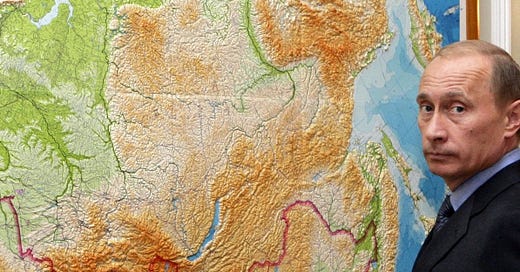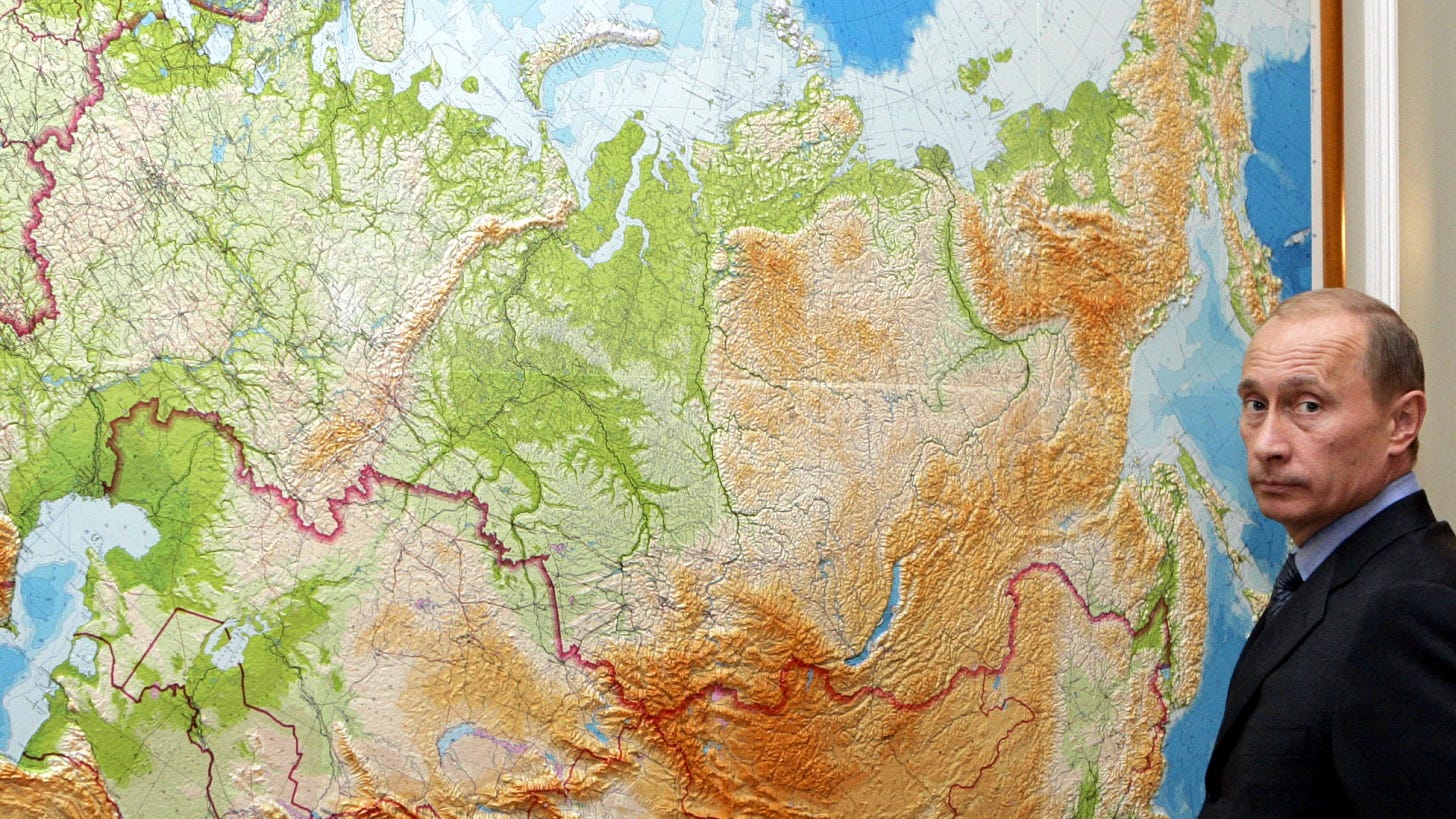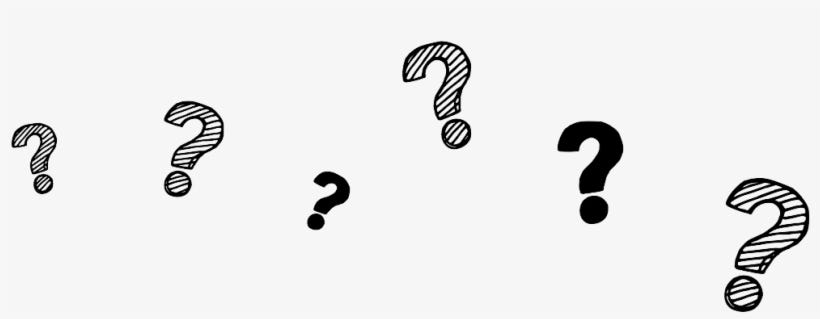Any social scientist will tell you that framing is fundamental to our understanding of the world. The same can be said for states and relations between them. A frame is the worldview through which governments tell their stories. From these stories, they justify their actions. So, safe to say, if you don’t grasp the frame, you will have a hard time grasping the actions that spawn from it.
As of February 24, Russia has begun its invasion of Ukraine, stupefying many of us with its recklessness. Because American intelligence has been so consistently wrong for the past two decades, it was hard to believe it could actually come to this. Many struggled to understand how such a seemingly suicidal war could even be rationalized as justified by Russia.
Keeping this in mind, I would like to take the time here to discuss a simple question: what is the Russian state’s frame?—Or, more specifically, what is Vladimir Putin’s frame?
There’s been much talk nowadays in the media, at least in the United States, about Putin’s aspirations to remake the Soviet Union. You don’t have to look far to find this talking point. Senator Romney told reporters, “Putin can’t be allowed to rebuild the Soviet Union.” During a press conference on February 24, President Biden plainly said, “[Putin] wants to reestablish the former Soviet Union.” And there are so many other examples of this kind of rhetoric all over the media. To the old Cold Warrior in Washington, and much of the U.S. security apparatus, this seems to be their only point of historical reference, at least publicly.
Another common talking point is that Putin has just snapped. A once-rational state actor has veered into complete unpredictable irrationality. Maybe he has somehow gone mad. “I personally think he’s unhinged,” James Clapper, the former director of national intelligence, told CNN, “I worry about his acuity and balance.”
Yet, I would argue both of these frames are fundamentally incorrect. As will be explained, the Soviet period is viewed as a tragic aberration by many Russian nationalists today because it is believed to have ruined the thousand-year imperial process of historical Russia. We must also remind ourselves that ideology often looks like complete madness to those outside of it. When someone feels consistently threatened, regardless of whether it’s real or imagined, that is precisely the moment when ideology swoops in to provide some coherence. Putin and his lackeys, in other words, have caught the bug of ideology because of their paranoia. And now ideology is partly steering the ship.
This was on full display during Putin’s 45-minute national address on February 21st. The unprecedented monologue was filled with historical arguments, perceived security concerns, and a reimagining of the international order. It had the pretensions of world-historic importance in its telling. The frame was arguably all there, and it deserves to be unpacked further so we can really understand the ideas at play here.
The 19th Century Frame
Judging from the title of this piece, you’d be right to assume the frame I am trying to put forward is one from the 19th century. But what is this reference point, and how is it so unlike our recent history?
Europe during the long 19th century (1789-1914) had such strong patterns of thought that were, in many ways, so unlike ours today. Folk ideas of peoples and nations existed alongside the beginnings of liberal capitalism, industrial production and modernity. What resulted was a strange mix, and history took on an almost greater-than-life dimension: the distant past seemed to overwhelmingly burden the present and all its most pressing questions. During this time of nation-building, sometimes the past even had to be invented and tweaked toward this end. The public sphere, as we know it today, was also just emerging during this period.
One of the most virulent ideas of the era was nationalism and population politics. The “National Question,” as it was so-often called, was everywhere. Every peoples had their take on it—be it the Germans or the Irish or the Armenians or the Poles. Aspiring nation-states sought to carve out land for their peoples. Within the international order, it was the only way to be ‘seen.’ Additionally, nationalist imperial regimes often leveraged their diasporas in neighboring lands to justify annexation. Defining and categorizing people as part of your nation thus became a chief concern of politics.
The Russian Empire, of course, inserted itself into this frame. In many ways, it was at the forefront of this development: commonly using Russians, Slavs and/or those of the Orthodox faith as chips on its geopolitical chessboard. Given that many Slavs did not have their own nation-states then, this proved to be a potent strategy during the 19th century. Through nationalism, segments of the Astro-Hungarian, German or Ottoman public could be stoked and excited. Yet, the Russian Empire often overestimated their own hand in these matters. And in many cases, stoking these feelings even worked against them, since they could not control the outcome. Nonetheless, it was a crucial tactic of power politics during the long 19th century and defined the period.
What’s in a Question?
As I already mentioned, the 19th century had strong, impressionable patterns of thought. It also possessed a distinct rhetorical style of posing problems as questions needing to be solved. I already mentioned the National Question—but there was, too, the Social Question, the Woman’s Question, the Eastern Question, the [insert problem here] Question. All of these problems also possessed an immediacy. They demanded immediate solutions because, the longer the question festered, the worse it was thought to become.
The “X Question” form was arguably the 19th century’s most recognizable discursive feature. It was, in some sense, the meta-frame of how people thought about problems and how they were posed to the public during the long 19th century. Historian Holly Case’s Age of Questions (2018) is the first book to really unpack this pattern of thought in all its variety, so I am fully indebted to her for this reference point. Tragically, many of these questions met violent ends as regimes enacted increasingly-desperate solutions. The most obvious example is the genocidal Final Solution perpetrated by the Nazis, with its name being no coincidence: it was in direct response to the “X Question” frame.
The question-format provides us with little breadcrumbs that something ‘19th century’ is amiss in Russia’s thinking. It is thus a suitable starting point for understanding the 19th century frame. After all, the phrasing does not come intuitively. It points to a particular mode of thought.
The most obvious example relates to Crimea. Home to the Black Sea Fleet, Crimea has historically been of strategic importance to Russia for both maritime trade and military preparedness. In the run-up and during the 2014 War in Donbass, it became fashionable in Russian media to speak of крымский вопрос [the Crimean Question]. After annexation, that question for the Russian state was thought to be ‘solved.’ Putin commented on this directly in July, 2018 while in Helsinki, Finland: “the Crimean Question is closed for Russia.”
Yet, that was not the only question plaguing Russia. For Russian irredentists, the geopolitical landscape is full of other questions that need solutions. Perhaps we can group the territorial status of Transnistria, Abkhazia, South Assetia and Artsakh under this umbrella. In December 2020, Putin told reporters that the приднестровский вопрос [Transnistrian question] was close to being solved, but that it was thwarted in the last moment by Western nations.
Such questions and many others took on new life during Putin’s third presidential term (2012-2018), when he arguably began his ‘conservative turn.’ The turn centered around on a core problem: how to imagine the Russian nation in a post-Soviet era. In short, the story of the Russian World had to be told again. And this, naturally, begins with a question. As Deputy Prime Minister Dmitry Rogozin happily wrote in a December 2012 op-ed in Izvestia, “Putin has brought the Russian Question out of the underground,” a topic which “just months ago” had been “taboo.”
Within this Russian World story, Ukraine is categorically different from all other questions. It is an existential-spiritual question of special importance to the Russian nation. Again, we see an uptick in the “X Question” format relating to this topic. Over the past few weeks, there’s been an increased interest in the украинский вопрос [Ukrainian Question] within Russian media, but the most flagrant mention was in a recent article in RIA Novosti (which was quickly deleted thereafter). This document states in plain terms:
“Vladimir Putin took upon himself, without a drop of exaggeration, a historical responsibility by deciding not to leave the solution of the Ukrainian Question to future generations.”
By solving this question, Russia is said to be “restoring its historical fullness.” But what does this mean? To answer this, we need to look at the substance of the 19th century frame as it relates to Russia, not just its rhetorical quirks.
The question-format is therefore like an arrow pointing to something, but what is that ‘something?’
The Story Russia Is Trying to Tell Itself
In Russian nationalist story-telling, the Russian World is made up of three parts: Great Russians (Russians), White Russians (Belorussians) and Little Rusians (Ukrainians). These three groups make up the All-Russian nation which were believed to be created after the decline of the Kievan Rus’ (879–1240 AD), which eventually fell to the Mongols. The period is of special importance also because it is the starting point for Slavic Christianization, after Vladimir the Great’s conversion in roughly 988 AD. The origin story of Kievan Rus’ is told in the Old East Slavonic tale Rus’ Primary Chronicle (1113 AD).
In 1674, the historical work Kievan Synopsis linked Russian Tsardom as the legal successor to the Grand Princes of Kievan Rus’. And so, the story was crafted, granting imperial ‘Mother Russia’ dominion over its three parts.
Immediately, you can tell this origin tale is not merely ethnic-nationalist. Instead, it is civilizational: the three parts make up the Russian World, along with its compatriots (diaspora) elsewhere. As the famous Soviet dissident Aleksandr Solzhenitsyn wrote:
"We all together emerged from the treasured Kiev… White Russians [Belarusians] and Little Russians [Ukrainians] acknowledged that they were Russians and fought against Polonization and Catholicism."
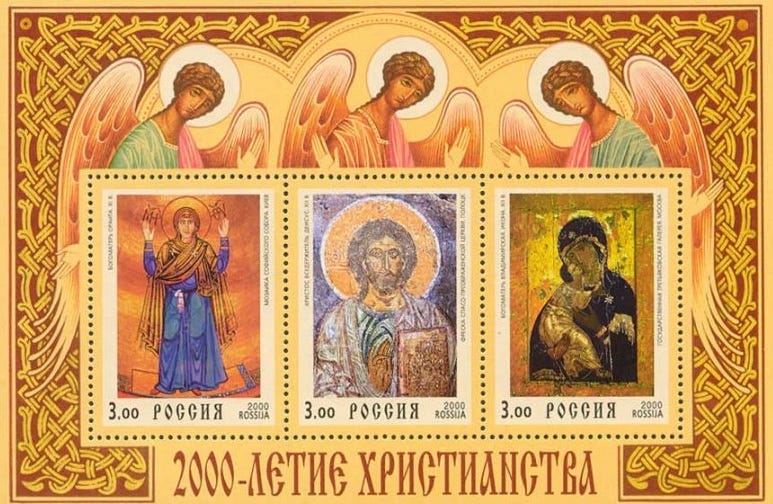
But let us return to the 19th century. During the reign of Czar Nicholas I (1825-1855), this story was expanded and incorporated into proper state policy. The frame became real through the imperial state and thus justified its actions.
“Orthodoxy, Autocracy and Nationality” was the triad and governing philosophy of his regime—Orthodoxy, the protection of the Russian Orthodox Church; Autocracy, the unconditional belief in the House of Romanov; and Nationality, the national spirit (narodnost) made up of three parts with some gestures toward pan-Slavism. After the Decembrist Revolt of 1825, Nicholas I recognized that political realities were changing. The triad was crafted to soothe the tide of popular sovereignty that was taking over in the West which could come to Russia.
Nicholas I thus adopted romantic nationalism, but gave it a strong statist character. This traid was thought to be something ‘homegrown’: free from foreign influence, but also partially modern and ‘of the age.’ It was hailed by many Slavophiles of Russia as unique to its history and development.
As Sean Cannady and Paul Kubicek (2014) convincingly write, Putin faced similar pressures after the fall of the Soviet Union. He had to bend to the tide of democracy, at least in name, for international legitimacy much like Nicholas I had to bend to the tide of nationalism. At the same time, he “[did] not believe the Russian people [were] capable of growing civil society on their own and that they must therefore be stimulated by the state.” As Putin said in 2012, his first challenge was “creating the country’s unity [and the] establishment of sovereignty of the Russian people, rather than the supremacy of individuals and groups, across its entire territory.”
The ghosts of the 19th century thus live on in Putinism as a blend of both new and old. The triad lives on in another form: Orthodoxy—with the Russian Church’s revivalism in the past two decades; Autocracy—with Putin’s centralized state and deflecting all blame to his apparatchiks, much like the Czar obfuscated responsibility through his boyars; and Nationality—with the Russian World and its many parts feeling resentment over their lost past.
That last part of the triad is especially crucial because it relates directly to the ongoing Ukrainian War.
Putin’s All-Russian Nation and the Ukrainian War
On February 21 2020, Putin began his justification of the coming Russo-Ukrainian War with an assertion:
I would like to emphasize again that Ukraine is not just a neighboring country for us. It is an inalienable part of our own history, culture, and spiritual space.
Repeatedly, Putin has said he views Ukraine as an existential question for the Russian World. Such views did not emerge out of the blue, but they are relatively recent.
In July 2021, Putin published an essay titled On The Historical Unity of Russians and Ukrainians. In this 5000-word piece, Putin outlines his argument for the historicity of the all-Russian nation. While not denying Ukrainian identity outright, he sees it as occupying a shared “spiritual and historical space” with Russia.
In his view, ‘Ukraine’ first began as a signifier for the western-most frontier of historical Russia. Putin writes:
The name ”Ukraine“ was used more often in the meaning of the Old Russian word “okraina“ (periphery), which is found in written sources from the 12th century, referring to various border territories. And the word “Ukrainian“, judging by archival documents, originally referred to frontier guards who protected the external borders.
The piece goes further into specifics: discussing the Polish-Lithuanian Commonwealth, Orthodox-practicing Christians living in modern-day Ukraine are said to have rebelled and wished to live in Russia. The Treaty of Perpetual Peace (1686) ultimately incorporated Kiev into Russia and the region to the east of Dnieper River was deemed “Little Russia.”
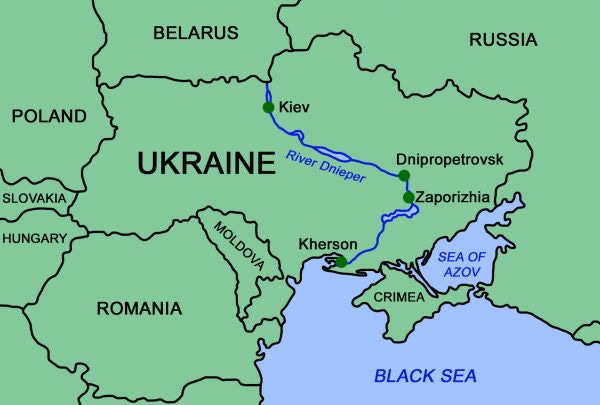
But Putin’s essay goes beyond just historicity. He uses the historical argument to ultimately make a cultural one. He mentions how great Ukrainians in the arts constitute a “common literary and cultural heritage.” Moreover, he speaks highly of the region’s historic diversity which all belonged, at one point, to the Russian World—where they “all preserved their faith, traditions, and customs.” As you can tell, this is a civilizational argument, not just a nationalist one.
Yet, not all are created equal. For example, he qualifies the suppression of the Ukrainian language during the 19th century: it was unfortunate, he writes, but ultimately justified because it was being used as a wedge against Russia by neighboring Polish nationalists. Still, this is nowhere near as strong as the language employed in the latter-half of his essay.
According to Putin, the key problem with contemporary Ukrainian identity is that it is fundamentally rooted in being ‘anti-Russian.’ He accuses the purveyors of its nation-building project as trying to create a “anti-Moscow Russia.” When viewed in this way, it is a inter-civilizational war within the Russian World over which is the real cultural center and true legacy of Kievan Rus’.
When speaking of this, Putin does not mince his words:
It would not be an exaggeration to say that the path of forced assimilation, the formation of an ethnically pure Ukrainian state, aggressive towards Russia, is comparable in its consequences to the use of weapons of mass destruction against us. As a result of such a harsh and artificial division of Russians and Ukrainians, the Russian people in all may decrease by hundreds of thousands or even millions.
In his view, it is a break in historical destiny: “our spiritual unity has […] been attacked.”
Then, there is the Soviet Union—a topic repeatedly mentioned as the original sin, the root of the Russo-Ukrainian problem.
Putin blames the Soviet Union for creating the borders of modern Ukraine without respect to culture or history. Russia’s 1000-year imperial process is said to be interrupted by this unfortunate development. Lenin is particularly to blame for reifying Ukrainian nationalist aspirations, because he granted Ukraine the status of a republic within the USSR. Although “the union republics did not have any sovereign rights,” they nonetheless became the borders of the post-USSR states.
He furthered this idea during his 45-minute speech on February 21, 2022, in a taunting way:
Actually, as I have already said, Soviet Ukraine is the result of the Bolsheviks’ policy and can be rightfully called “Vladimir Lenin’s Ukraine.”
…
You want decommunization? … We are ready to show what real decommunization would mean for Ukraine.
Altogether, this essay presents us with all the ideological coordinates of Putin’s view of Ukraine. Naturally, these have now become state policy. The essay has been institutionalized in the Russian military as mandatory reading. Others in the Russian government, like Dmitry Medvedev, have written supportive follow-up essays.
Although it is all plainly written out, most Western commentators have completely ignored this ideological justification in plain sight. Instead, they have fixated on some fictitious dream of ‘bringing back the Soviet Union.’ Maybe because the idea is an easy sell to concerned Western audiences. Still, it has led to a complete misinterpretation of the frame of the Russian state and its aspirations.
To bring up yet another example, in December 2021 Putin again lamented the collapse of the USSR. Commentators were quick to say he was “planning to recreate the Soviet Union.” But this is a fundamental misinterpretation over what affect is being discussed. Putin is not lamenting the collapse of the Soviet Union as an entity that should come back—but rather laments it because, with it, historical Russia also collapsed. This is a key point of confusion. He said in December:
"It was a disintegration of historical Russia under the name of the Soviet Union… we turned into a completely different country. And what had been built up over 1,000 years was largely lost.”
Russia’s aspirations in Ukraine clearly have little root in its Soviet past other than assigning it blame.
Moreover, it would be hard to argue to these long ideological-historical justifications are the ravings of someone suffering from brain fever. This is not insanity, this is ideology. And, as so often happens, the actions that come forth from ideological commitments can sometimes manifest as extreme recklessness. It’s often been said, “let justice be done, though the world perish! [Fiat iustitia, et pereat mundus!].” Putin has chosen his concept of national justice—and is willing to ‘let the world perish,’ at least just a bit, if it impedes on his desire to correct a historical wrong.
By dispelling these two claims, the real ideological frame for Russia’s actions comes into view. That frame is from the 19th century: the height of the all-Russian nation and the state’s involvement in its vision.
The 19th Century Frame Clashes with the 21st Century

When one reads On The Historical Unity of Russians and Ukrainians, one is immediately struck by its language. It reads like a relic of a bygone era, reaching back eons ago for its justifications. Could it really be that this document, which might as well had been written some 150 years ago, belongs to our current historical moment?
Indeed, it does. The 19th century frame is crashing into the 21st century with unrelenting force. Great power politics and competition, with its penchant for nationalist and civilizational thinking, is its substance. And there is arguably no indication that it will fade into irrelevance in our increasingly multipolar world.
Neorealist thinking, with its fixation on realpolitik and power politics, was deemed to be ‘over’ by so many international relations scholars since the end of the Cold War. The 21st century person, after all, thinks in an “urban world society” perspective, writes Jaap de Wilde. To a 21st century person, the 19th century actor seems mad and unintelligible. And herein lies the problem, as international relations scholar John Mearsheimer presented in 2015:
Do you understand? Putin is a 19th century man. He does view the world in terms of balance of power politics. As do we, when it comes to the Monroe Doctrine in the Western Hemisphere. But in the case of Europe, we were thinking like 21st Century people. We thought we could just drive right up to his doorstep and it wouldn't matter.
None of this is excusatory toward Putin’s reckless war, of course. But ultimately, Putin’s frame will meet some of the hard limitations of 21st century geopolitics. It has already undone key aspects of his vision. Unfortunately for Putin, the war has strengthened Ukrainian identity far more than ever before. He simply underestimated the information sphere’s ability to impact the warfront with such force, by solidifying an identity he believed to be malleable.
In all, that is one of the key lessons here: once identities are ‘put out into the world,’ regardless of their historical circumstances, they are made real over time. Putin believed he could put the genie ‘back in the bottle’ and amend the century-old historical problem he believed to be at fault. Such a process, while easier in the 19th century, is compounded to near impossibility in the 21st century information economy. Still, it is far too early to say with any certainty.
But expect more of this in the coming decades: the old with the new, the distant past informing the accelerating present, co-existing in a globally contested terrain. It is a multipolar world, with rising powers using civilizational arguments to justify their agendas. On second thought, that does sound quite like the 19th century, now doesn’t it?
It’s something I will be exploring, in more general terms beyond Russia, in a future column.

